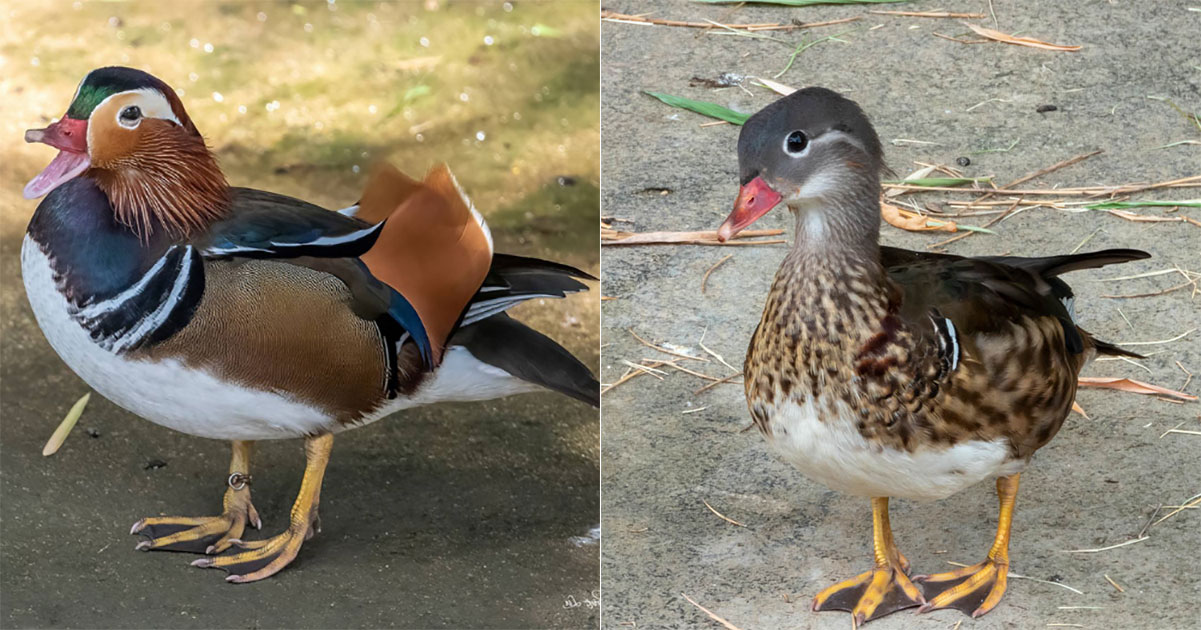Follow us on Telegram for the latest updates: https://t.me/mothershipsg
A colourful and super attractive mandarin duck showed up in a canal in Hougang in June 2021 and caused a spectacle.
Its mere presence in an urban environment in suburban Singapore attracted dozens of photographers and bird watchers who camped out night and day to catch a glimpse of the fancy bird.
Mandarin duck back, less fancy
And it appears that the mandarin duck has come back to Hougang -- albeit looking less fancy.
Photos put up on the Bird Sightings Facebook group on Oct. 17 showed the mandarin duck looking more drab, like its female counterpart, but otherwise, alive and well -- and still attracting onlookers.
Photographers were seen staking out at the canal.
The duck has lost its bright plumage in a process known as molting.
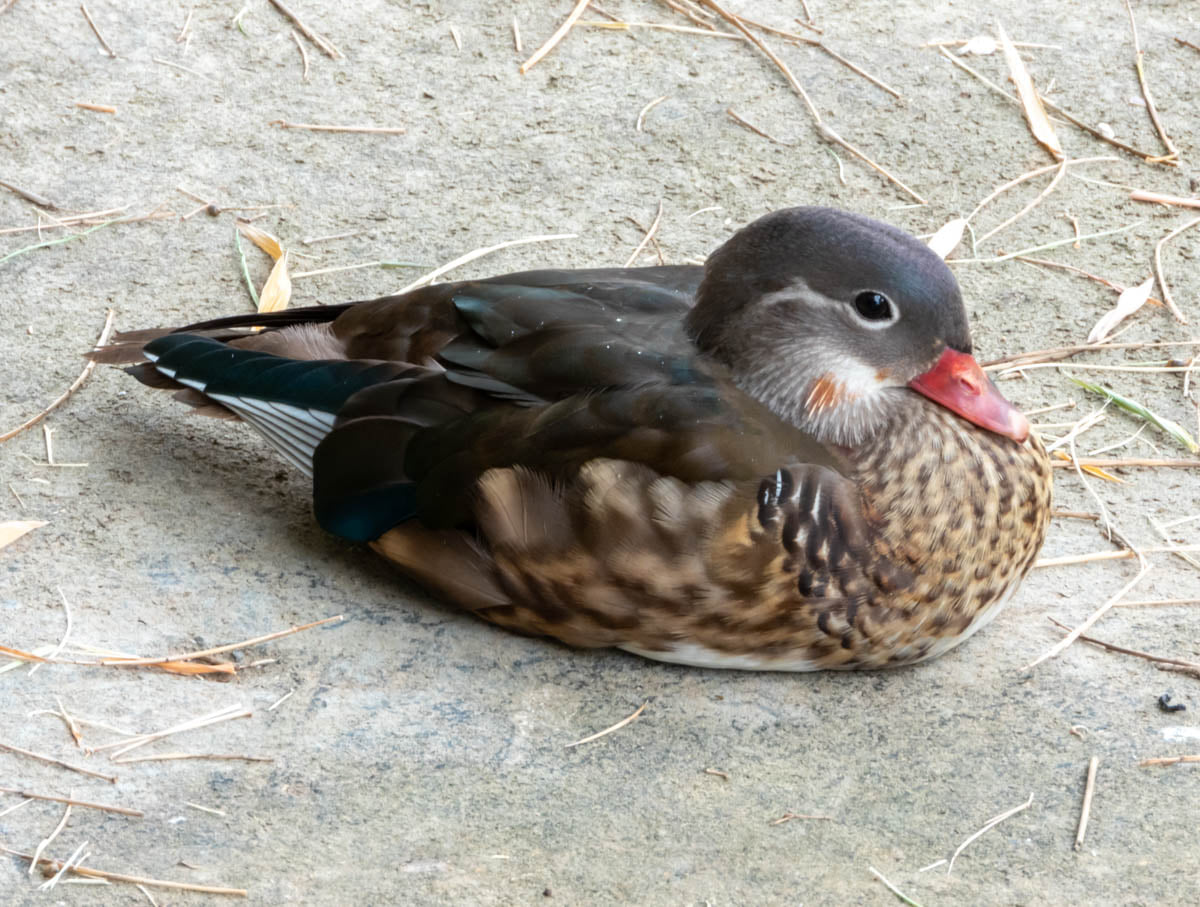 via May Swales
via May Swales
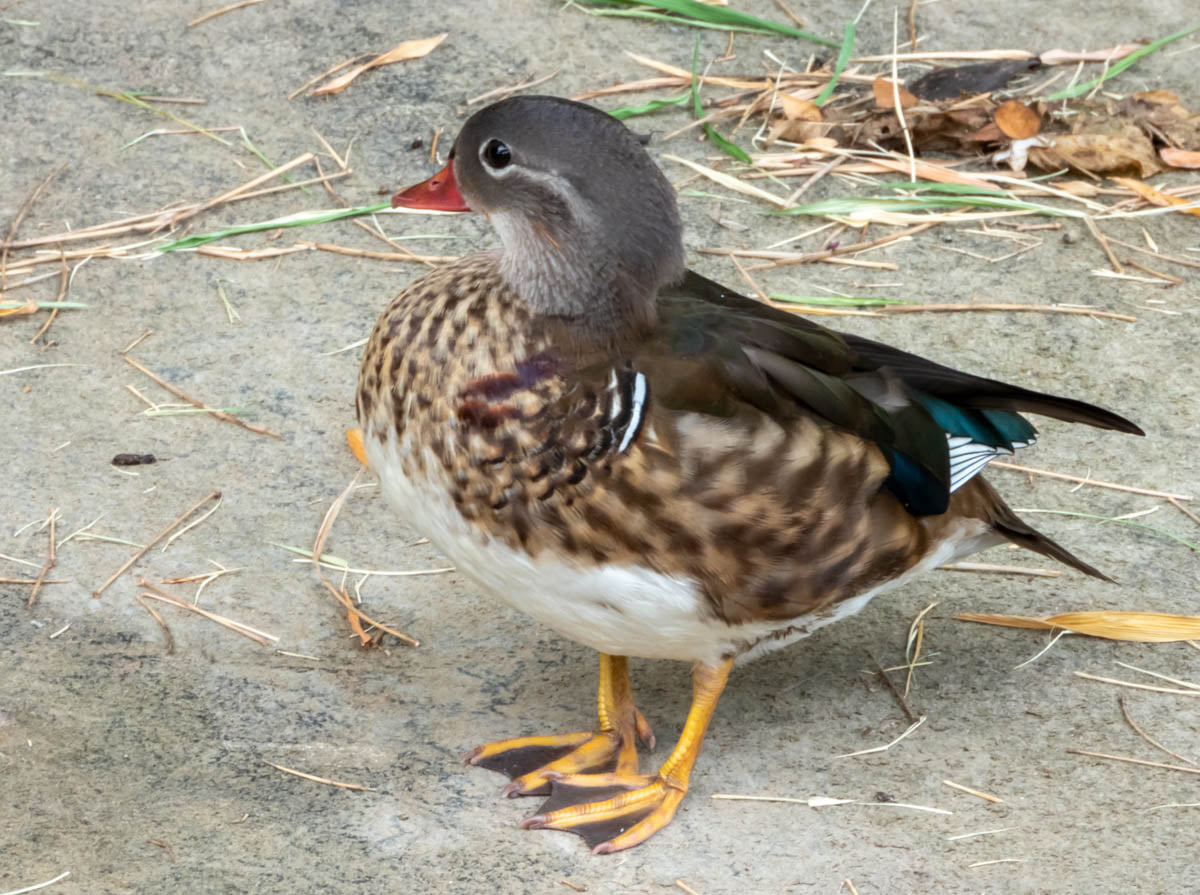 via May Swales
via May Swales
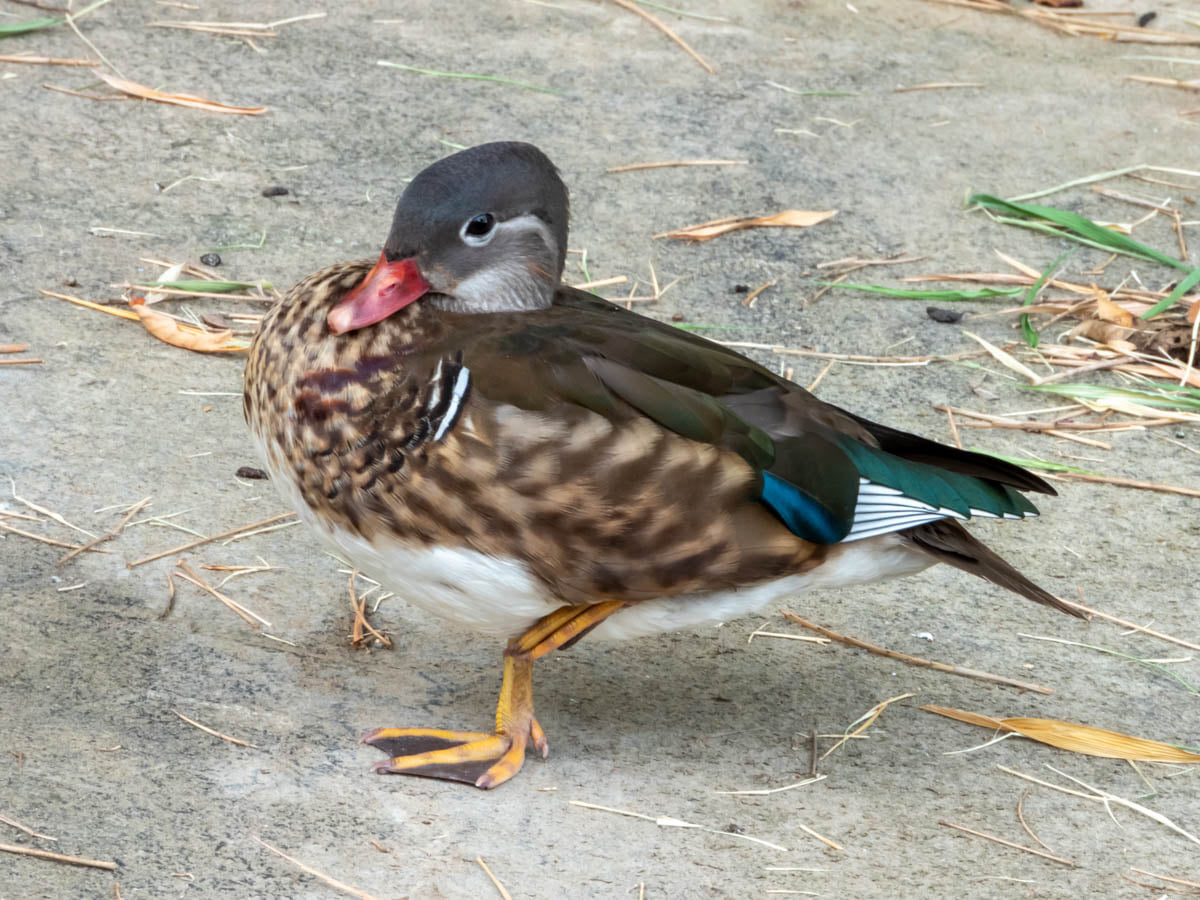 via May Swales
via May Swales
From afar, the duck appeared to blend well into its concrete surroundings.
 via Fiona Tan
via Fiona Tan
Ducks molt
All birds replace their feathers at least once a year, in a process known as molting.
This usually occurs after breeding season.
Male mandarin ducks molt the showy feathers they use to attract mates and look drabber with their eclipse plumage.
The only difference between waterfowls such as ducks and most birds is that ducks swap out all their flight feathers at the same time, which leaves them grounded for about a month.
To make themselves inconspicuous to predators during that vulnerable period, ducks molt their head and body feathers first for camouflage.
Male duck's distinctive features
The post with the mandarin duck's photos was accompanied by a caption that explained why birdwatchers are convinced this is the same duck as last time, and not another separate female duck.
The male mandarin duck has a red beak, while females don't.
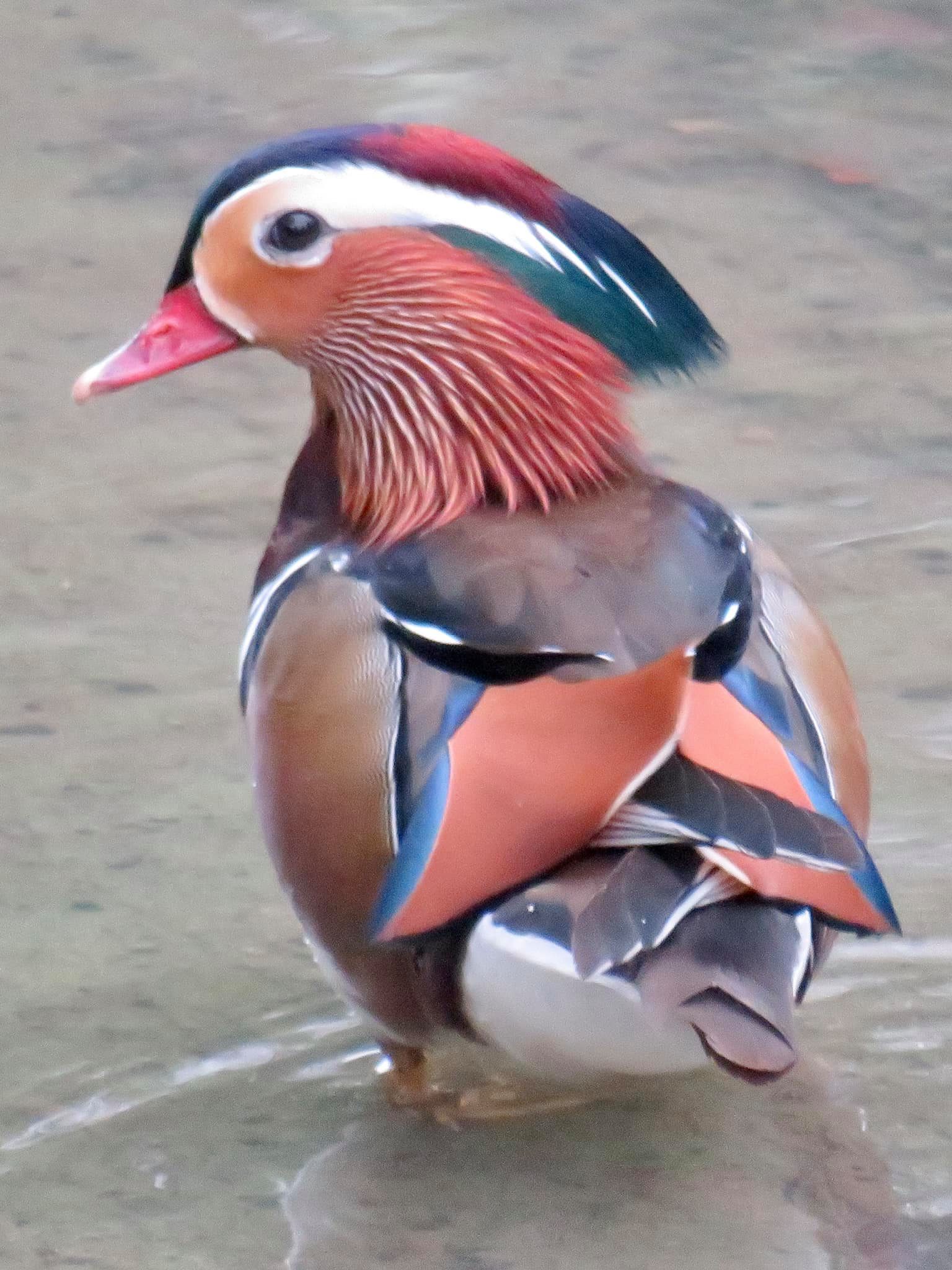 via James Peh
via James Peh
The male mandarin duck also still has a bit of an orange spot on its cheek.
Except this time round, the chain previously seen on its right leg has now gone missing.
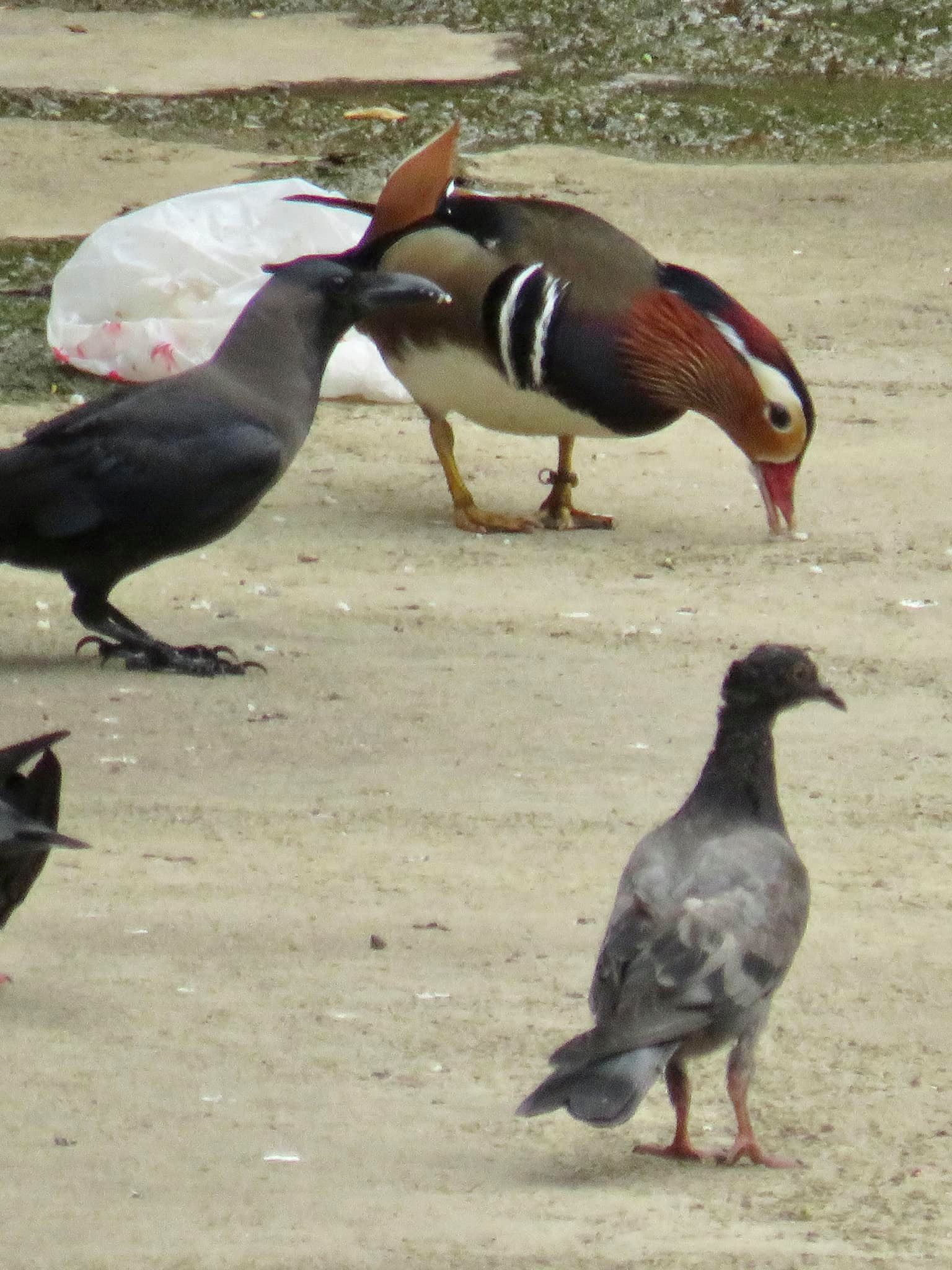 via James Peh
via James Peh
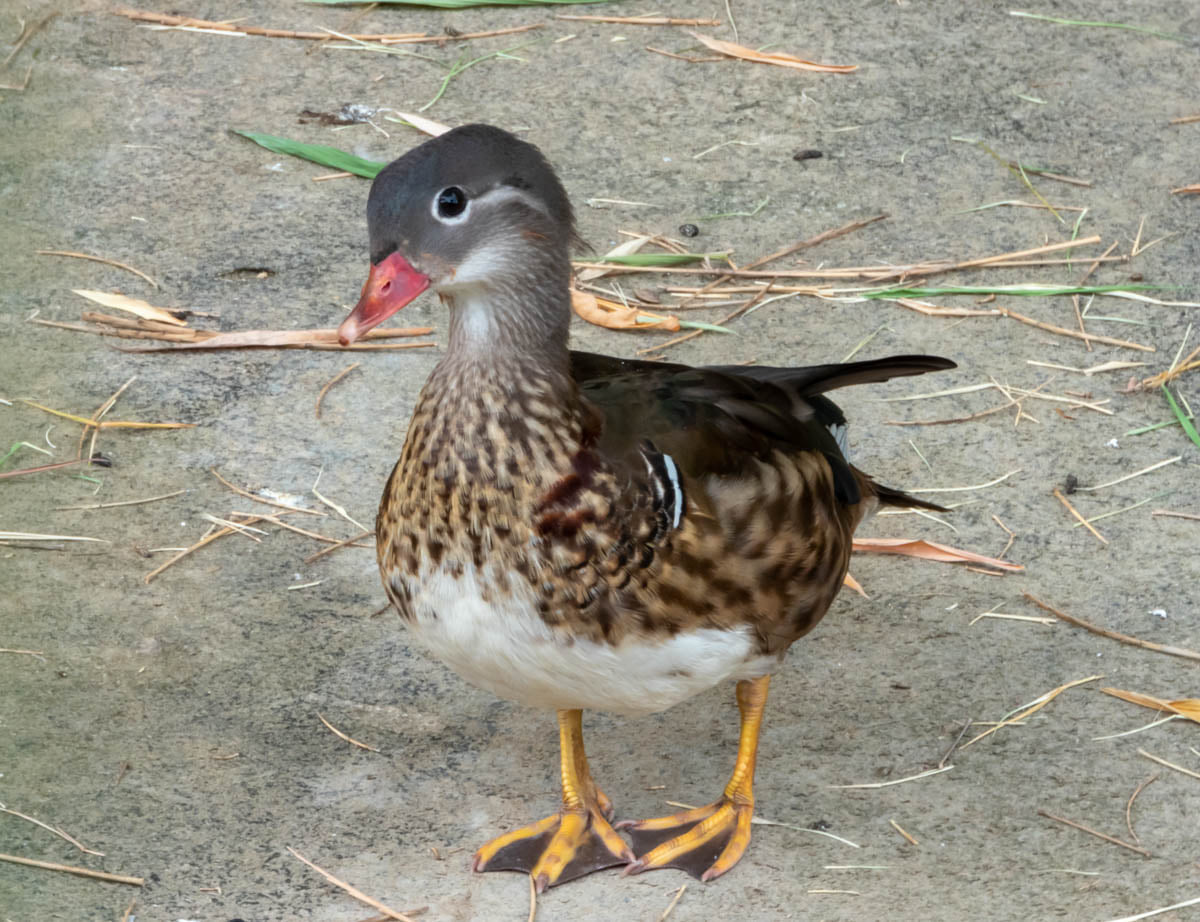 via May Swales
via May Swales
Not sure where duck went before this
The duck was reported to have left the canal for about a day in June, which led to disappointment
But that letdown was temporary.
The duck returned in about a day.
The mandarin duck had apparently flown off from the canal near Block 522 Hougang Avenue 10 after a failed attempt to catch it on June 21.
A bird photographer at that time told Mothership.sg that the owner of the Mandarin duck came to the canal to look for the escapee pet on the same day.
Subsequently, as the buzz died down, the duck and its admirers were left to their own devices.
Not native
Mandarin ducks are sexually dimorphic, which means that males and females look vastly different from each other.
A male mandarin duck has a red beak, and a large white crescent above the eye.
Its breast is purple and there are two orange large feathers sticking up near its back.
The female mandarin duck, on the other hand, has a white eye-ring and stripe running from the back of its eye, and has much paler plumage compared to its male counterpart.
The mandarin duck is not native to Singapore.
This mandarin duck in Hougang is believed to have been a pet.
In August 2008, a female mandarin duck was spotted near Botanic Gardens, as reported by a bird ecology study group.
The study group cited bird specialist R Subaraj, who said at least two pairs of mandarin ducks were released into Botanic Gardens a few years before.
Follow and listen to our podcast here
Top photos via Katherine Lu & May Swales
If you like what you read, follow us on Facebook, Instagram, Twitter and Telegram to get the latest updates.
